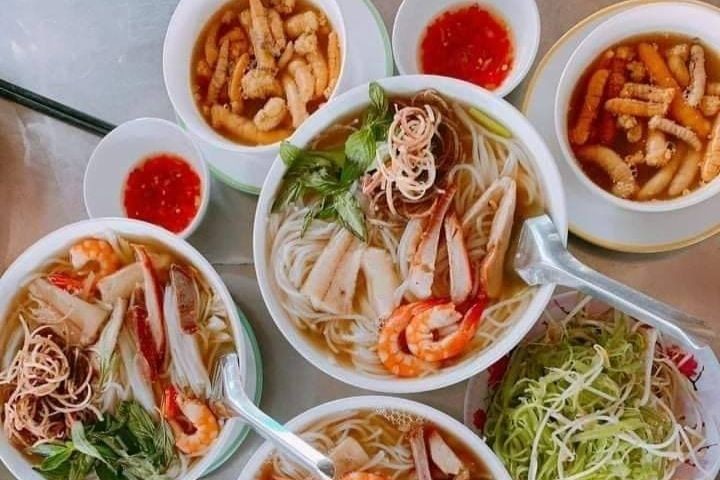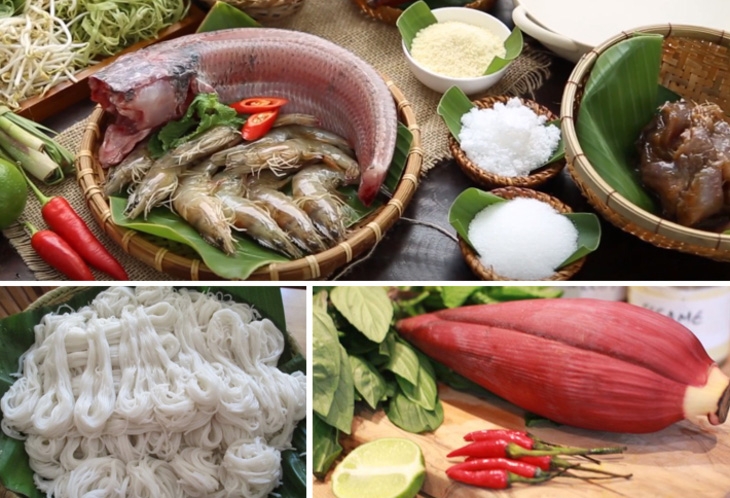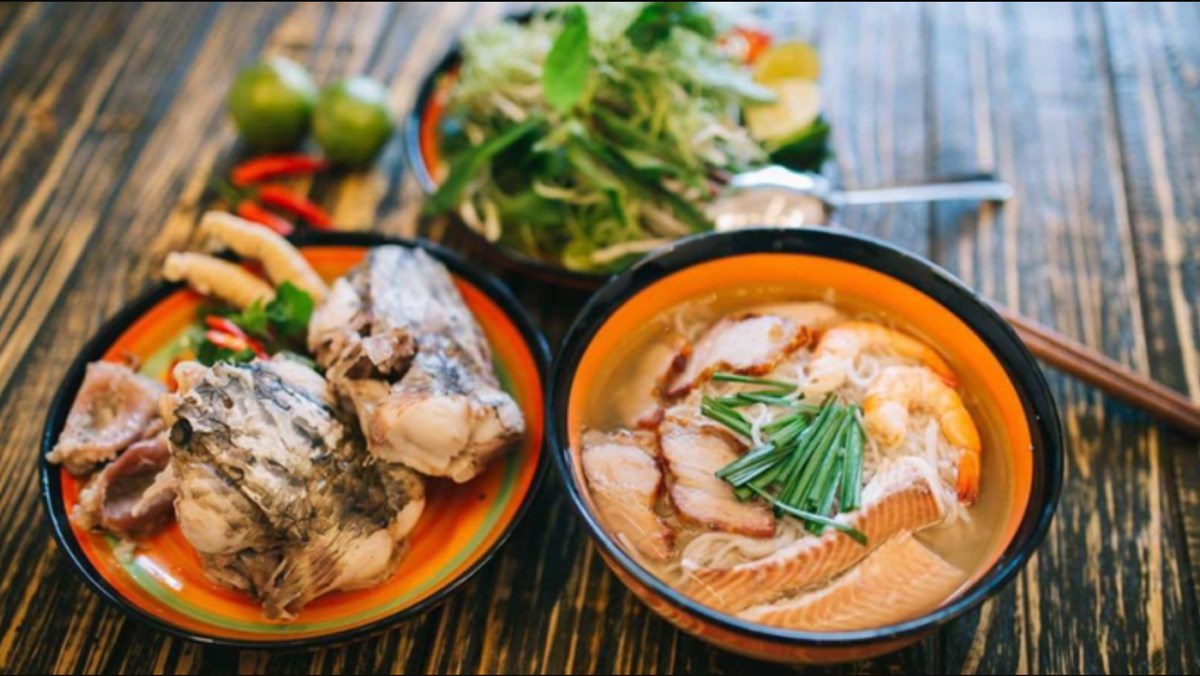Bún Nước Lèo
1. What is Bún Nước Lèo?
Bún nước lèo is a traditional noodle soup from Sóc Trăng province, located in the Mekong Delta of Vietnam. This dish is deeply influenced by the culinary traditions of the Khmer, Kinh, and Chinese communities living in the area.
What makes bún nước lèo special is its aromatic broth made from fermented fish (mắm)—giving the soup a unique, rich, and flavorful taste. It’s considered one of the most iconic dishes of southern Vietnam, especially popular in Sóc Trăng and Trà Vinh.
2. Characteristics of the Dish
Bún nước lèo stands out thanks to:
-
A clear but strongly flavored broth made from mắm bò hóc (fermented fish paste), balanced with lemongrass and sometimes coconut water.
-
A bowl typically includes rice vermicelli noodles (bún), boiled snakehead fish (cá lóc), pork, shrimp, or even roast pork (heo quay).
-
It’s topped with fresh herbs, bean sprouts, and sometimes banana blossom.
The result is a complex yet well-balanced dish, with flavors that are savory, slightly sweet, herbal, and deeply umami.
3. Ingredients and How It’s Made
Broth ingredients:
-
Fermented fish (mắm bò hóc)
-
Lemongrass
-
Pineapple
-
Coconut water (optional, to soften the fishy taste)
-
Shallots and garlic
Toppings include:
-
Boiled snakehead fish fillets
-
Pork slices or roast pork
-
Shrimp (optional)
-
Rice vermicelli noodles (bún)
-
Fresh herbs: basil, mint, chives, banana flower, lettuce
-
Chili and lime for seasoning
How it’s made:
-
The fermented fish is cooked slowly with water, lemongrass, and pineapple to create a clear, fragrant broth.
-
The broth is carefully filtered to remove bones and sediment.
-
Noodles are blanched, placed into bowls, and topped with fish and meats.
-
The hot broth is poured over, and the dish is served with a side of fresh vegetables.
4. How to Enjoy Bún Nước Lèo
-
The dish is usually served hot, often at breakfast or lunch.
-
Diners add lime juice, fresh chili, and herbs according to taste.
-
It’s typically enjoyed in open-air noodle stalls, local markets, or small family restaurants in Sóc Trăng.
Despite the strong-smelling broth, most people find the flavor surprisingly pleasant, mild, and addictive.
5. Cultural Significance
Bún nước lèo is more than food—it’s a symbol of cultural harmony in Sóc Trăng:
-
The Khmer brought the mắm (fermented fish) and herbal balance.
-
The Vietnamese added rice noodles and fish toppings.
-
The Chinese community contributed roast pork and spices.
This fusion has created a dish that reflects the diversity and unity of the region’s communities.
The dish is often served at temples, festivals, and family gatherings, and it’s a source of regional pride for the people of Sóc Trăng.
Conclusion
Bún nước lèo Sóc Trăng is a unique culinary treasure of southern Vietnam. With its deep cultural roots, rich flavors, and comforting warmth, it is a must-try for anyone wanting to explore the true taste of the Mekong Delta.




